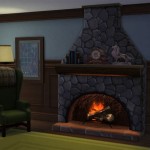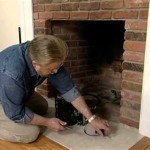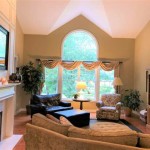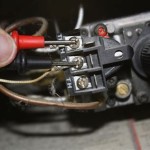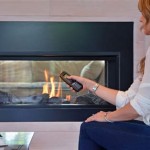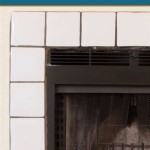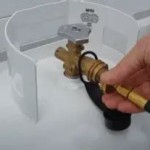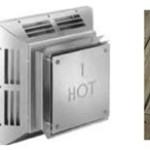Is Soapstone Good For Fireplaces In Georgia?
Georgia, with its diverse climate ranging from mild winters in the south to cooler conditions in the northern mountains, presents unique considerations for fireplace materials. Soapstone, a natural stone composed primarily of talc, magnesite, chlorite, and amphibole, has gained popularity as a fireplace material. This article examines the properties of soapstone and evaluates its suitability for fireplaces in the specific context of Georgia's climate and common architectural styles.
Understanding the physical and thermal characteristics of soapstone is crucial to evaluating its performance as a fireplace component. Soapstone's high density and mineral composition contribute to its excellent heat retention capabilities. It absorbs heat slowly and radiates it evenly over extended periods, providing a sustained and comfortable warmth. This contrasts with materials like brick or metal, which tend to heat up and cool down more rapidly. Furthermore, soapstone is chemically inert, meaning it is resistant to acids and alkalis. This property makes it durable and less susceptible to staining or damage from fireplace byproducts.
Georgia's climate influences the demand for and the effectiveness of different fireplace materials. The winters, while generally mild compared to northern states, still necessitate heating solutions, particularly in the northern regions. The humidity levels, which can be high throughout the year, also play a role in material choice. Soapstone's non-porous nature makes it resistant to moisture absorption, preventing cracking and degradation that can occur with porous materials exposed to fluctuating humidity levels.
Heat Retention and Efficiency
One of the primary benefits of soapstone in fireplaces is its superior heat retention. This characteristic stems from its high density and specific heat capacity. When heated, soapstone stores a significant amount of thermal energy and releases it gradually into the surrounding environment. This provides a more consistent and comfortable heat compared to fireplaces constructed with materials that heat up and cool down quickly. In the context of Georgia, where heating is often needed for extended periods during the colder months, this heat retention can translate to increased energy efficiency and reduced fuel consumption.
The slow and even heat radiation of soapstone also contributes to a more comfortable indoor environment. Unlike fireplaces that produce bursts of intense heat, soapstone fireplaces emit a gentle, radiant warmth that is less likely to cause temperature fluctuations and dryness. This is particularly beneficial in homes with open floor plans or those prone to drafts, as the consistent heat output helps maintain a stable and comfortable temperature throughout the space.
Furthermore, soapstone's heat retention properties can reduce the frequency of refueling required to maintain a consistent level of warmth. This is especially advantageous for wood-burning fireplaces, where frequent refueling can be inconvenient. The ability of soapstone to store and release heat allows for longer periods between wood additions, simplifying the operation of the fireplace and reducing the overall workload.
To further illustrate the efficiency, consider a comparison with a traditional brick fireplace. Brick, while aesthetically pleasing, has a lower heat retention capacity than soapstone. A brick fireplace will heat up relatively quickly, providing a burst of warmth initially, but it will also cool down more quickly once the fire dies down. Soapstone, on the other hand, will take longer to reach its maximum temperature, but it will continue to radiate heat for several hours after the fire has been extinguished. This sustained heat output makes soapstone a more efficient and effective option for heating a home in Georgia.
Durability and Maintenance
Soapstone is a remarkably durable material, resistant to a wide range of environmental factors. Its non-porous nature makes it impervious to water absorption, preventing cracking and deterioration caused by freeze-thaw cycles. This is particularly relevant in the mountainous regions of North Georgia, where temperatures can drop below freezing during the winter months. The resistance to moisture also prevents the growth of mold and mildew, which can be a concern in the humid climate of the state.
The chemical inertness of soapstone further enhances its durability. It is resistant to acids and alkalis, making it less susceptible to staining or damage from fireplace byproducts such as soot and creosote. This reduces the need for frequent cleaning and maintenance, saving time and effort in the long run. Simple cleaning with soap and water is typically sufficient to remove any surface dirt or stains.
Soapstone is also relatively scratch-resistant, although softer than materials like granite or marble. Minor scratches can often be buffed out with mineral oil or fine-grit sandpaper. This ease of repair contributes to the longevity of soapstone fireplaces, ensuring they maintain their aesthetic appeal for many years. The ability to refinish the surface also allows homeowners to refresh the look of their fireplace without the need for replacement.
Compared to other fireplace materials, soapstone requires minimal maintenance. Unlike metal fireplaces, which can rust or corrode over time, soapstone is naturally resistant to corrosion. Unlike brick or mortar fireplaces, which may require repointing or sealing to prevent water damage, soapstone's non-porous nature eliminates the need for these types of maintenance procedures. This low-maintenance characteristic makes soapstone a practical and cost-effective choice for homeowners in Georgia.
The density and inherent strength of soapstone also contribute to its resistance to cracking and chipping. While it is still possible to damage soapstone with extreme force, it is significantly less prone to damage than more brittle materials such as ceramic tile or natural stone with pronounced veining. This makes it a suitable material for high-traffic areas and homes with children or pets.
Aesthetic Versatility and Design Considerations
Soapstone's neutral color palette and smooth texture lend themselves to a variety of architectural styles. Its natural gray tones complement both traditional and contemporary designs, making it a versatile choice for homeowners in Georgia with diverse aesthetic preferences. The stone can be fabricated into various shapes and sizes, allowing for customized fireplace designs that seamlessly integrate with the existing decor.
The smooth, matte finish of soapstone provides a subtle elegance that is both understated and sophisticated. It can be used to create a focal point in a room without being overly ostentatious. This understated elegance is particularly well-suited to the Southern charm often associated with Georgian architecture.
Soapstone can be used to create a variety of fireplace designs, from simple and minimalist to more elaborate and ornate. It can be combined with other materials such as wood, metal, or glass to create unique and visually appealing fireplace surrounds. The versatility of soapstone allows homeowners to express their personal style and create a fireplace that reflects their individual tastes.
When designing a soapstone fireplace, it is important to consider the overall size and layout of the room. A larger room may benefit from a larger fireplace, while a smaller room may require a more compact design. The placement of the fireplace should also be carefully considered to ensure optimal heat distribution and aesthetic appeal. Consulting with a qualified fireplace designer or contractor can help homeowners create a soapstone fireplace that meets their specific needs and preferences.
In addition to its aesthetic versatility, soapstone is also available in a range of finishes, from honed and polished to more natural and rustic textures. This allows homeowners to further customize the look of their fireplace to match their desired aesthetic. A honed finish provides a smooth, matte surface, while a polished finish offers a more reflective and glossy appearance. A natural finish retains the stone's original texture and character, providing a more rustic and organic look.
The color variations within soapstone can also add to its aesthetic appeal. While typically gray in color, soapstone can exhibit subtle variations in shade and veining, creating a unique and visually interesting surface. These natural variations add character and depth to the fireplace, making it a one-of-a-kind feature in the home.
Ultimately, soapstone presents a multifaceted solution for fireplaces in Georgia. Its heat retention capabilities, durability, and aesthetic versatility make it a suitable choice for homeowners seeking a reliable and visually appealing fireplace material. While initial costs may be higher compared to some alternatives, the long-term benefits of energy efficiency, low maintenance, and lasting beauty make soapstone a worthwhile investment for enhancing the comfort and value of a home in Georgia.

Four Reasons Why Soapstone Stoves Are Worth The Investment We Love Fire

5 Great Reasons To Choose A Soapstone Wood Stove We Love Fire

5 Great Reasons To Choose A Soapstone Wood Stove We Love Fire

Four Reasons Why Soapstone Stoves Are Worth The Investment We Love Fire

Church Hill Soapstone Fireplace Surrounds And Mant Grey From United States Stonecontact Com

Churchill Soapstone 3cm Honed Fireplace Surround From United States Stonecontact Com

Soapstone Fireplace Surround From United States Stonecontact Com

Slippery Rock Gazette Five Focal Point Worthy Fireplaces In Marble Granite And Soapstone

Making A Statement Designer Kirsten Grove S Timeless Soapstone Fireplace Polycor Inc

Nunnauuni Soapstone Fireplace Emits Heat For A Long Time
Related Posts

